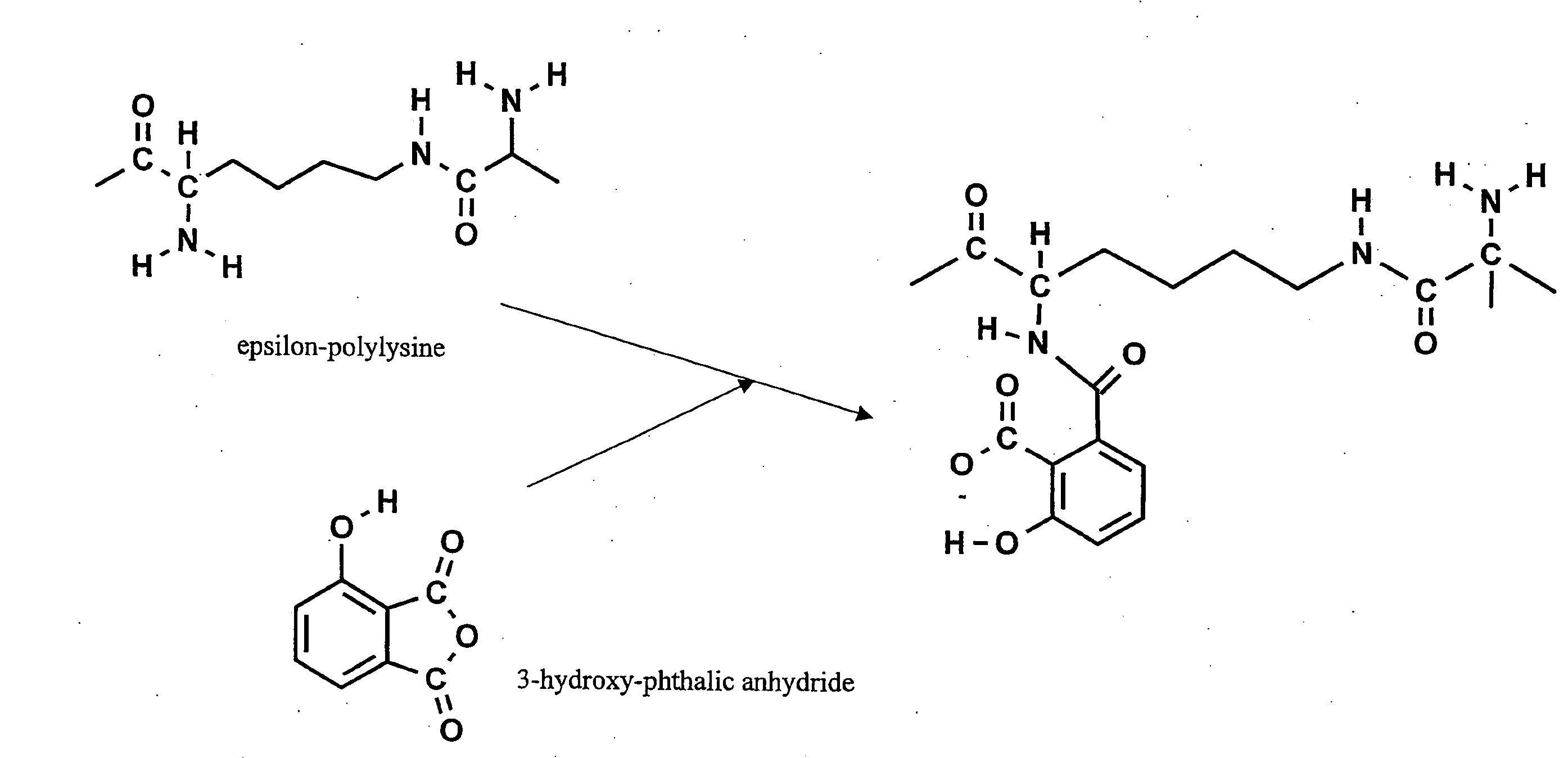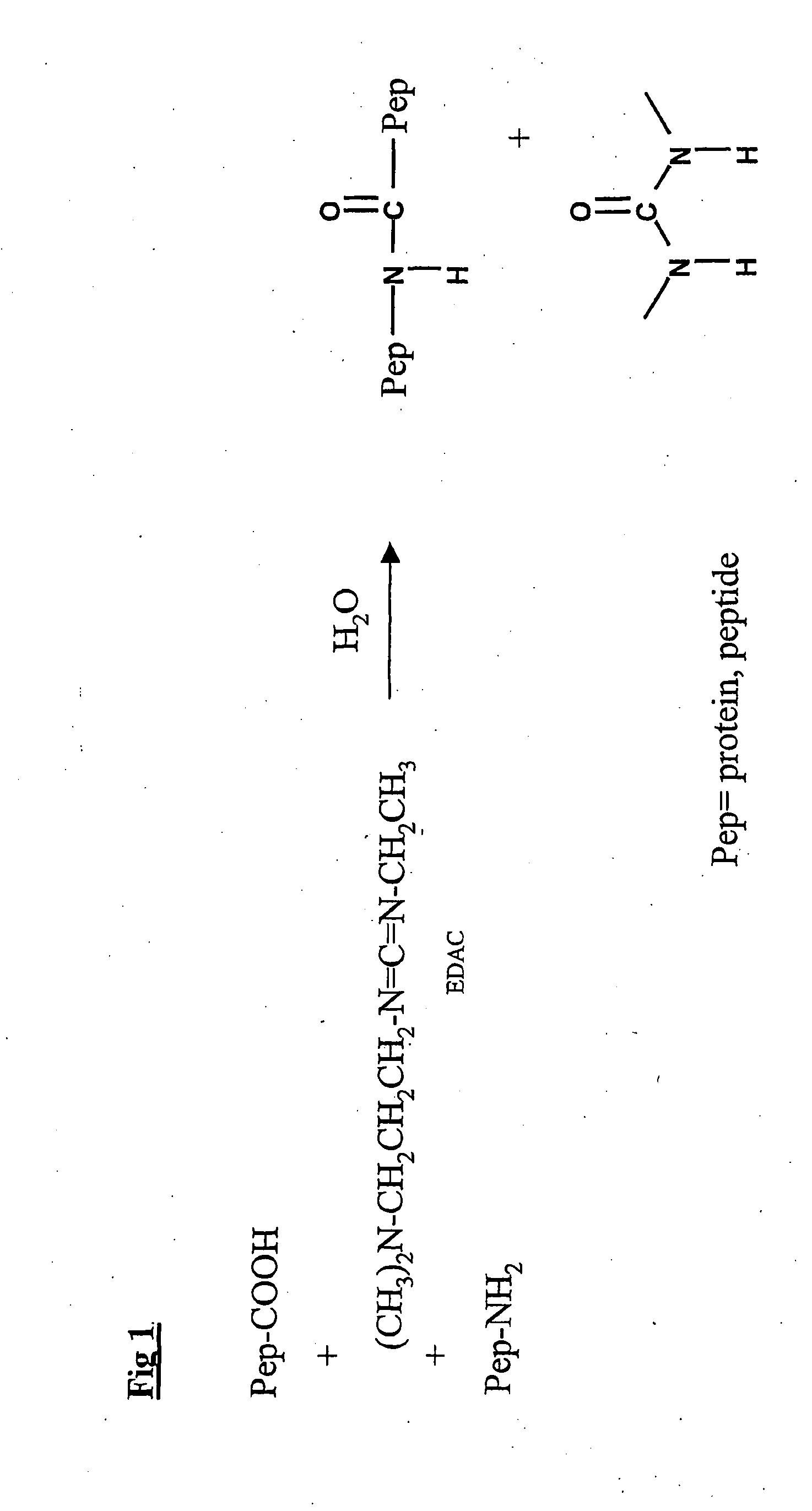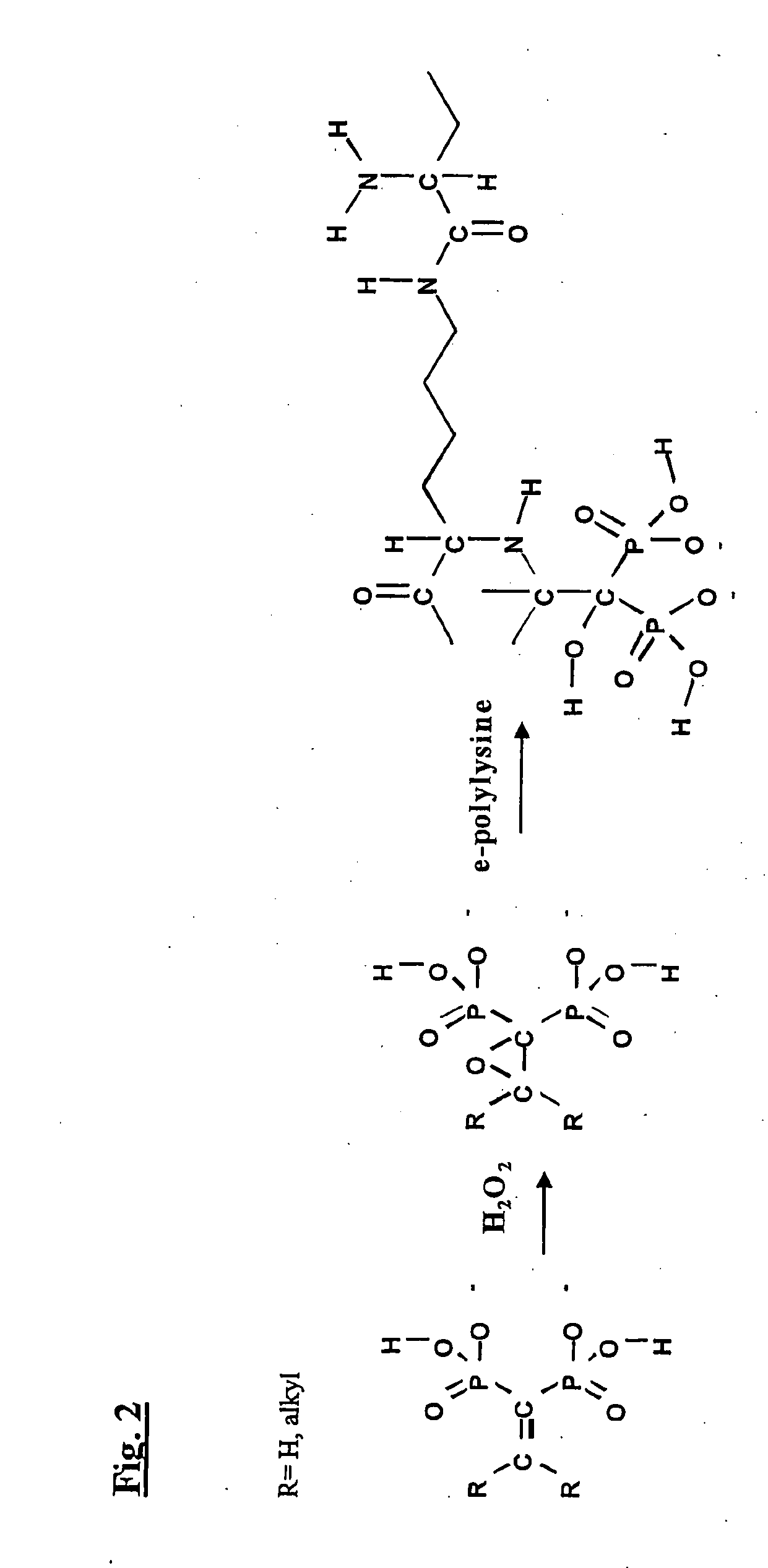Anticariogenic Proteins & Peptides & Saccharides
a technology of peptides and saccharides, applied in the field of oral bacteria, can solve the problems of tooth loss, tooth surface demolishment and gradual demineralization, and insufficient saliva protection competence, and achieve excellent and enhanced protection, attractive toxicological profile, and enhanced protection
- Summary
- Abstract
- Description
- Claims
- Application Information
AI Technical Summary
Benefits of technology
Problems solved by technology
Method used
Image
Examples
examples
A. Methods & Materials
[0091]Products. Casein phosphopeptide (CPP, Mw 1-2 kD, 1000-2000 dalton), Tris(hydroxymethyl)-aminoethane (Trizma), vinylidene bisphosphonate, chitosan, hydrolysed chitosan (Mw: 2000 to 30000 dalton), 3-hydroxy-phthalic anhydride, 1-(3-(dimethylamino)propyl)-3-ethylcarbodiimide hydrochloride, sodium fluoride, epsilon-polylysine (Mw 4100 dalton), carboxylated chitosan, phosvitin and trypsin are available on the market.
[0092]Phosvitin hydrolysates with a molecular weight of 1-3 kD (PPP) can be obtained by partial alkaline dephoshphorylation of phosvitin, followed by enzymatic hydrolyses with trypsin (B. Jiang et al., J. Agric. Food Chem 2000, 48, 990-994).
[0093]The partially hydrolysated phosvitin with a molecular weight above 20 kD and that has been used in the in-vivo experiment C.2.2., has been made from the proteins (containing phosvitin) of egg-yellow, that are obtained after extraction on industrial scale of the lipids from egg-yellow. The 1.5 L protein sol...
experiment 4
lations that Contain Aminopeptides (with Calcium Chelating Components) and Fluoride.
[0147]Tooth samples have been treated (the procedure is outlined under chapter “Examples; Method & Materials; determination of the PF-value”) with gels that have been viscosfied with hydroxyethylcellulose. They contained sodium fluoride, CaCl2.2H2O and KH2PO4, and optionally bisphosphonylated e-polylysine and / or casein phosphopeptide-epsilon-polylysine copolymer.
bisphosphonatedCPP e-polylysinecellulosee-polylysinecopolymerNaFCaCl2•2H20KH2PO4delta P%%%%%%μmPFpH4.0000005509.04.2000.30018.868.18.84.24.200.33.31.810.781.9904.07.00.33.21.7689.97.74.07.000.35.53.0493.29.1
%: on weight basis versus water
cellulose: hydroxyethylcellulose; all solutions are gelled.
CPP-e-polylysine copolymer / Ca / PO4 mixtures are viscous as such and do not necessarily require a thickener to prepare a gel; Bisphosphonylated e-polylysine / Ca / PO4 mixtures are not viscous
pH: of the gelled solution
[0148]Three tooth samples have been tre...
PUM
| Property | Measurement | Unit |
|---|---|---|
| Fraction | aaaaa | aaaaa |
| Solubility (mass) | aaaaa | aaaaa |
| Molecular weight | aaaaa | aaaaa |
Abstract
Description
Claims
Application Information
 Login to View More
Login to View More - R&D
- Intellectual Property
- Life Sciences
- Materials
- Tech Scout
- Unparalleled Data Quality
- Higher Quality Content
- 60% Fewer Hallucinations
Browse by: Latest US Patents, China's latest patents, Technical Efficacy Thesaurus, Application Domain, Technology Topic, Popular Technical Reports.
© 2025 PatSnap. All rights reserved.Legal|Privacy policy|Modern Slavery Act Transparency Statement|Sitemap|About US| Contact US: help@patsnap.com



